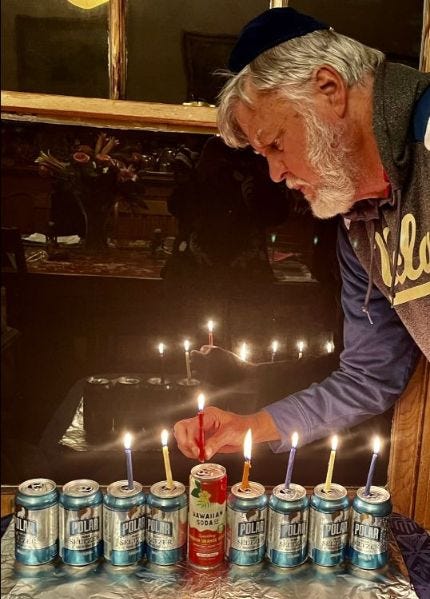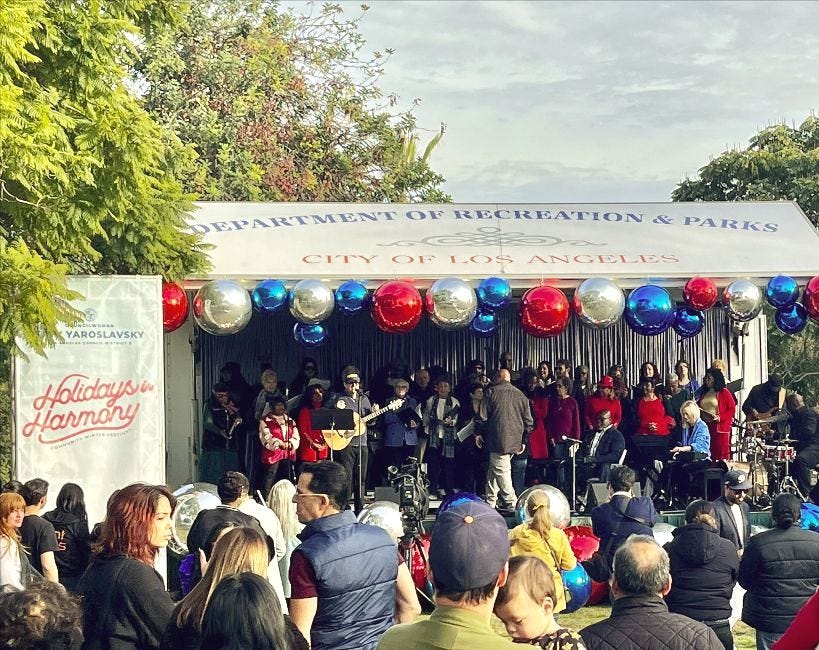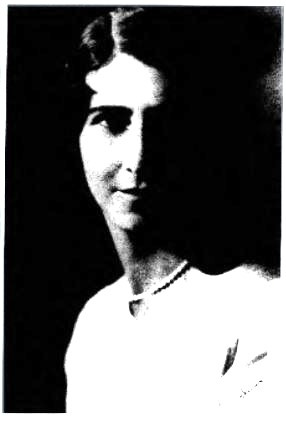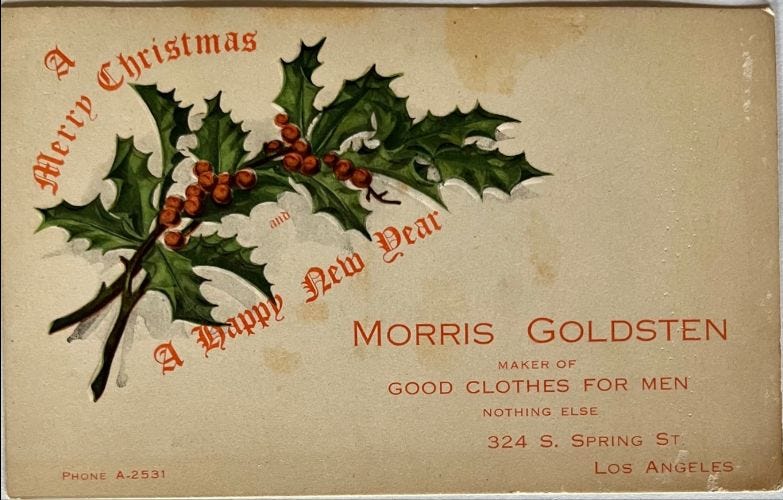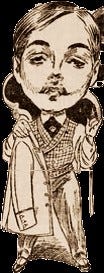When Holidays Converge
A New Scroll of LA Jewish News
Folks,
Looking for a bubbly way to celebrate Chanukah, I created a Canorah, or to be exact, a Canukiah. The events of the last year, the election, the antisemitism, the just outright meanness, had made me lose my fizzle, and I really needed a pick-me-up to begin the new year. It may seem like a cheap, even recycled, way to bring back the light, but you need to start somewhere. One little spark at a time to push back the darkness.
You too can add your light. By subscribing to MegilLA, you can help me continue publishing into 2025. As a journalist, I will be working to bring more light to the Jewish life around us. Please SUBSCRIBE today.
Chanukah Sameach & Happy New Year.
Edmon J. Rodman
////\/\\\\
////\/\\\\
Holiday convergence
in the park
Edmon J. Rodman
With the first night of Chanukah falling on Christmas for the first time since 2005, the City of Los Angeles found a festive and communal way to celebrate the converge with an afternoon program called “Holidays in Harmony.”
The festival, strategically held in LA High Memorial Park, in a neighborhood peopled with many of the city’s ethnicities and religions, attracted hundreds of folks who enjoyed a Sunday filled with music, crafts, and foods of both winter holidays.
The festivities, sponsored by the office of councilwoman Katy Yaroslavky, who attended the event, were delightfully free of politics and protests. Attractions included a rock-climbing wall, snow slide, and various holiday vendors, including one jewelry seller with Stars of David and hamsas.
Among several food trucks, one offered shawarma, falafel, schnitzel and kabobs.
Filling one side of the park, was a large bandstand, festively decked out with enormous blue, white, and red balls.
In tune with the spirit of the day, the combined Fame Church and Temple Isaiah choirs sang both Christmas and Chanukah favorites including “Ocho Kandelikas,” “Eight Little Candles,” a song with Ladino lyrics.
In the holiday crafts area, children of many backgrounds and faiths, along with adults, with the guidance of art teacher, Yael Lichaa, were making their own menorahs.
Lichaa, who was born and raised in Kyiv, Ukraine, hoped that events such as Holidays and Harmony could help to “Bring peace and unity to the world, and miracles into our lives. That’s what Chanukah is about,” she said.
////\/\\\\
Visiting my historic
Jewish neighbors
on Christmas Day
Edmon J. Rodman
On Christmas Day, I took a walk of memory through my neighborhood’s Jewish history. Though at the beginning I felt separated by time from my historic neighbors, by the walk’s end I felt a surprising kinship.
The year 2024 had been an unsettling, divisive and sometimes frightening year for Jewish Americans, and I wondered if taking a walk through the past would help to give me some distance and perspective.
Accompanied by my wife, Brenda, and a friend, Michael, on a day that can push a Jew out of their time, we took the time to visit the homes of Jewish residents. Some of them were well-known in the city, and had lived in my Country Club Park neighborhood between Olympic and Pico, and Western and Crenshaw.
Since many of the homes in the area were built in the earliest decades of the 20th century, and remain architecturally intact, I could stand in front of them, and imagine the lives lived within. My hope, on this somewhat alienating day, with Christmas trees in the windows, and decoration on the lawns, was to feel a renewed sense of place, and connection to it.
On my own block, we stopped in from of a home that from the 1920s until the early 40s was the home of Herbert Baruch and his wife Dorothy. Herbert, who owned a major LA construction company, built many of LA major edifices including the Hollywood Bowl, Wilshire Boulevard Temple, and the Hollywood Plaza Hotel. He was the son of Jacob Baruch co-owner of Haas Baruch, an LA-based major wholesale food distributor.
Dorothy Baruch was an educator, therapist, and author of many books, including titles just for children and others that gave parents advice on raising children. Mother of two children, she ran the Gramercy Cooperative Nursery School. (Read more about Dorothy HERE.)
Dorothy W. Baruch
The couple, having lived in the two-story home during a time when antisemitism was on the rise both in the US and LA, I wondered how that had changed the trajectories of their lives. A few years after moving from the neighborhood, Dorothy gained attention with her book “Glass House of Prejudice, A study of prejudice-what it does to your neighbor-what it does to you.”
Their time in the house was also during the Great Depression, and I was curious if the nursery school was a necessity; even for this successful couple.
On a nearby street, in a house then known as the American Hungarian Culture Club, another neighborhood educational enterprise was created in 1958. Called a Mittleshulle, or middle school, it aimed to “help the Jewish American teenager to understand his or her identification with the Jewish people through history, language,” and festivals song and dance.
As I looked at the two-story wood frame house, I felt a moment of connection. Sixty or so years earlier, Jews in the area, had struggled with the same issue of teen Jewish identification that my wife and I had with our own kids. If we had lived here all those decades ago, perhaps our kids would have attended.
On a street just west of us, we visited the former home of Isaac Ratner: one of the owners of Our Own Dairies in the 1930s. Of note, even during a period of antisemitism, Ratner put a Star of David on his dairy’s milk bottles. (I have one in my collection.)
Near the end of our trek through historical Jewish habitation, we stopped in front of an Art Deco apartment building that once was the home Rabbi Abram Maron. For most of his career, Rabbi Maron was the spiritual leader of Congregation Mogen David, located only a few blocks south of the neighborhood. Well-known throughout the Jewish community, in 1948, he was also the head of the local Board of Rabbis.
“So, a rabbi had lived here, also,” I thought, standing in front of the multi-story building. “Had his presence changed the area?”
For at least one couple it had.
In 1937, in the middle of the Depression, according to a note I found in the social column of the B’nai B’rith Messenger, a couple who wanted to have a Jewish wedding came to Rabbi Maron’s apartment, and without fanfare or guest list, or perhaps even without temple membership, he performed the ceremony.
What did I learn from the tour? The economy may change. Feelings about Jews can shift. A country in fear may head in frightening directions. But Jewish life goes on. In the past, we continued to find communal housing for our activities, and think about the future of our children. We perused justice with our words. We continued to create families, and feel pride in our heritage.
You too, can take a neighborhood Jewish history walk. If you would like to create your own Jewish neighborhood tour, begin with the pages of the B’nai B'rith Messenger which you can access HERE. Start with the name of your own street. Put it into the search box and see the results for the names and addresses of Jews who lived, loved, and celebrated Jewish life where you do now.
////\/\\\\
*Live from the Archive
Tailoring a holiday message
Edmon J. Rodman
If you were a Jewish Los Angeles businessman in the first decades on the 20th century, the Christmas holly on your promotional postcard (as shown above) needed to be as green as that of your competitor’s; especially if your name was Goldsten.
For a Jewish English tailor, like Morris Goldsten (who sometimes used the surname “Goldstein” in city directories), you played up your European taste and sophistication, and hoped that having a Jewish-sounding name evoked an image of value and skill with a needle.
“I have mastered the art of tailoring,” Goldsten, declared in 1911 in an ad in LA’s B’nai B’rith Messenger, “and I excel in giving prompt service, fit, expression and workmanship,” he added.
Another ad in the Los Angeles Times in 1908 confidently declared: “if you let us make you one suit, you will be pleased enough to let us make more.”
In 1906, Goldsten, was tailoring out of his home at 1326 E. 14th Street. However, winning a city-wide contest changed his fortune.
In March of 1907, he won $1000 worth of gold in a find-the-person contest run by the Los Angeles Herald in which the paper published clues daily on how to find the “Mysterious Mr. Raffles” hiding in plain sight on the streets of LA.
The contest, designed to drive up the paper’s circulation, had its readers enthralled. When Goldsten won it by identifying Mr. Raffles on a crowded downtown street, the tailor was written up in the paper.
Earlier In 1907, Goldsten had opened and stocked a tailor shop at 324 S. Broadway. By 1908, he was able to open a second location (With the aid of his winnings?), at the address on the postcard, 324 S. Spring St.
That same year, he also had a stylish caricature drawn of himself, and began to advertise in the Herald.
By 1910, he was back to one store, but with an expanded staff where “all of the garments are made on the premises by skilled tailors.”
Morris Goldsten was born in England in 1874. He immigrated to the U.S. in 1889, and first appears in an LA directory in 1900, though he probably arrived here a year of two earlier.
In 1894, Morris married Sarah, who was born in New York in 1864. The couple had a daughter Bessie, and the 1910 US Census also shows a young man named listed as a son, Joseph Goldsten, also a tailor, but too old to be their child, living with them.
The 1910 Census shows Goldsten as a “merchant tailor.”
By 1918, an ad in the LA Times announced that “the entire fixtures of Morris Goldstein, retired” were to be auctioned at his shop on Spring St.
The 1920 Census shows a dramatic change in occupation for Morris to a “farmer,” of a “Truck Farm.” An article in the Herald that year mentions him as president of the Independent Growers and Coachella Growers Association.
In 1923, Goldsten, died, and was buried in Home of Peace in East LA. Sarah died in 1927, and was buried next to him.
Morris was a member of B’nai B’rith, and at his passing, contributions were made in his name to the Federation of Jewish Charities. Perhaps his career as a tailor can be best remembered by the slogan that accompanied his ads: “Where Good Clothes Are Made.”
*The Rodman Archive of Los Angeles Jewish History is a collection of approximately 1000 objects, photos, clothing, art, books, recordings, and ephemera relating to the lives and endeavors of Jewish Angelenos between 1850 and 1980.
////\/\\\\
Seen on the way: Malibu
Photo Jethro Singer
Stop for this.





